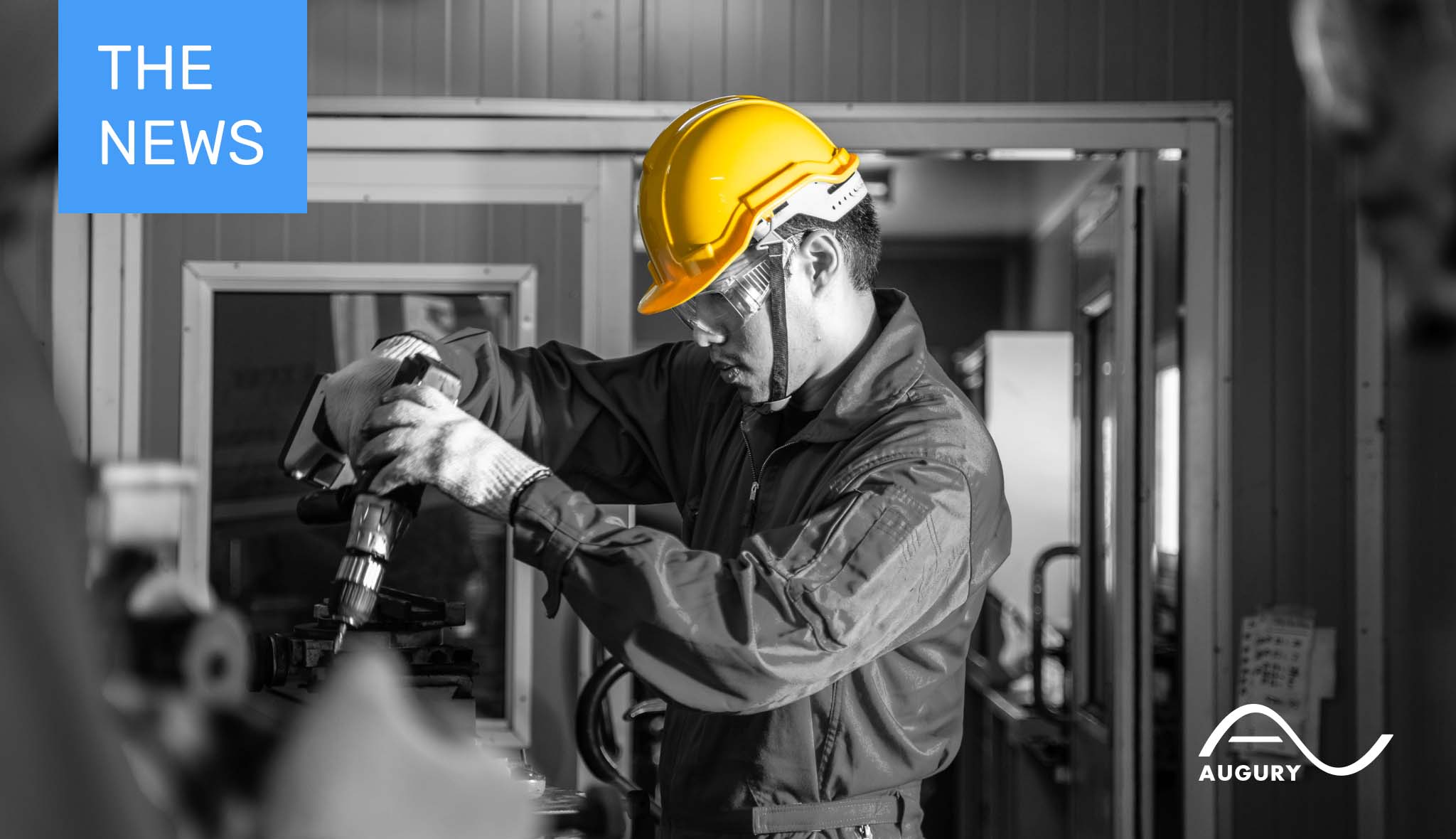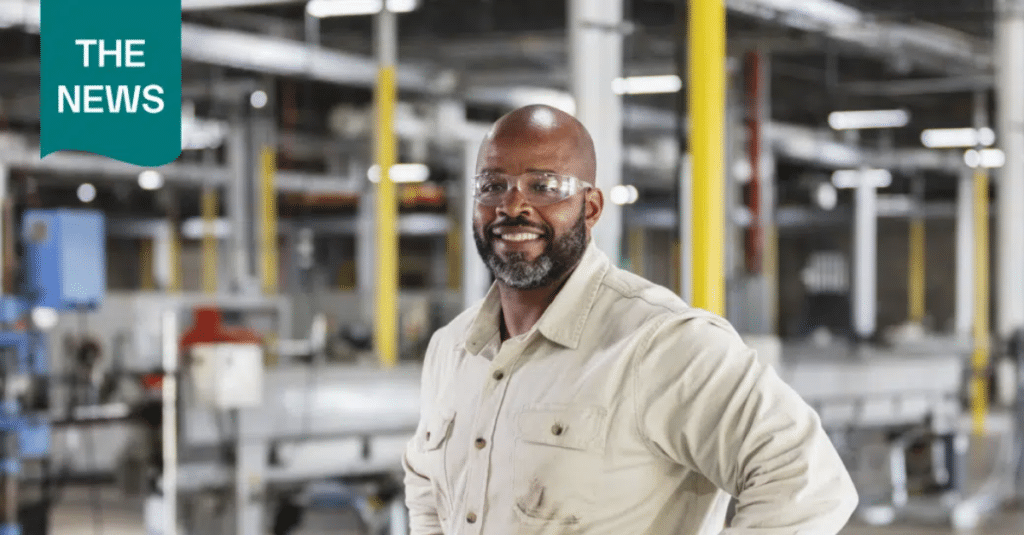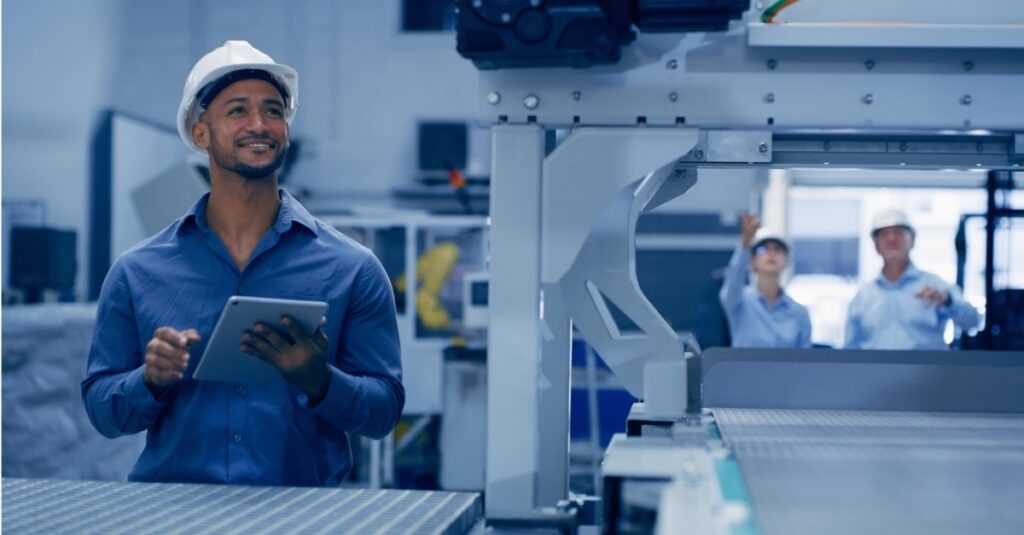
How do you calculate the full cost of a simple glass of water? Or of a complex machine like an airplane? What will be the environmental impact of future raw materials? Yes, AI can help with these big questions – but yes, AI may also have hidden costs… Read all about it in our monthly round-up of manufacturing-related news.
Liquid Assets
‘Companies used to take water for granted in their accounting. Not any more,” according to ‘Climate Pressures Force Businesses To Count True Cost Of Water’.
“With climate change exacerbating both water scarcity and flooding, companies are moving water and its associated costs up their list of priorities. They are adjusting how they account for the commodity and, in some cases, even developing internal pricing mechanisms for it.”
For example: “Diageo — the maker of Smirnoff vodka, Johnnie Walker whisky and Guinness — has, since 2016, set water replenishment targets for each of its country markets and required local units to invest from their main budgets to reach these goals.”
“They have a target to reach and, if they’re short of that target, they need to invest,” says one Diageo executive. And they are not just factoring in the cost of water tariffs but “the full costs related to treating, transporting, and discharging water”.
Some companies are also trying to measure and address broader risks. These include everything from “water-related stresses in its supply chain and health risks to its workers”, to owning “stranded assets” that must be abandoned due to water scarcity.
But without a formalized global system, all these efforts remain “more of an art than a science.”
Meanwhile, some companies are even reconsidering the future of certain products. Bottled water being the obvious one, with “bottled sugared water” being another. “To achieve a water-secure, sustainable future, there inevitably will be products that no longer exist,” says one pundit. ”It’s beholden on companies, if they wish to remain a vibrant member of a sustainable society to start innovating now.”
So Many Variables. So Much To Wrap Your Brain Around
“Complex products – such as planes, cars and boats have complex value chains – we need practical ways to calculate their total environmental footprint,” according to ‘Calculating The Lifecycle Environmental Impact Of Complex Products: How And Why’.
“Calculating the environmental footprint of a large aircraft wing, such as that used in the Airbus A350 or Boeing 787, is a complex job. For example, many are composite materials of carbon fibers and resins. Making carbon fibers starts with oil or gas, and progresses through chemical steps to produce propane, propylene, polyacrylonitrile and finally carbon fibers. The resin goes through its own series of steps.”
“Each step may be delivered by a different company. Each company has its own supply chain, energy usage, and a workforce that commutes in each day. Further emissions are created by transportation between them. Each step depends not just on energy used, but the local energy mix. A product produced in Sweden, with its 50% renewably powered grid, will be greener than the same product produced in coal-powered Poland.”
“And the wing material is just one part, of one component, of the plane.”
Does Your Brain Hurt Yet?
“With all that complexity, how on earth does a plane manufacturer – or a manufacturer of cars, ships, trains, or any complex product – calculate lifecycle environmental impact?”
First off, you have to ask for the data from your suppliers who may or may not even have, or want to share, this data. So yes, the whole process is tricky – and smothered in confusion sauce.
But you need to calculate lifecycle environmental impacts to report to your customers, regulators and shareholders. And more importantly, you need it to start making “informed decisions to improve long-term sustainability”.
“They can identify the environmental impact hotspots where you should focus resources. They highlight how proposed changes will ripple through the supply chain (e.g., how will changing to a local supplier reduce overall emissions), and if that is worthwhile when set against other environmental impacts. And they help us understand the trade-offs (e.g., might a material with a higher production footprint still be an environmentally sound decision because it saves fuel over a 20-year lifetime, or can be more easily recycled).”
Ouch goes the brain.
Calculating The Future
Meanwhile, Europe is trying to measure the environmental impact of raw materials relevant to building a greener future. “Transition to a low-carbon economy will create additional demand for many raw materials, production of which will have a range of environmental impacts,” according to ‘Estimating Environmental Damage From Key Resources Required For EU Low-Carbon Transition’.
For instance, the environmental impact of materials for electric-vehicle batteries such as nickel will skyrocket. Indeed, the annual cost of raw materials required for the transition is estimated to be €38.9 billion.
“The researchers highlight that as these environmental damage costs only represent 3.7% of costs from EU carbon emissions in 2018, they are likely to be outweighed by the benefits of the transition to a low-carbon economy.”
Suddenly, €38.9 billion sound like peanuts.
Not Just Loose Change…
In other “it’s all relative” news, ‘Bitcoin Could Be As Damaging To The Climate As Beef Or Oil Production’.
The article does however come with some good news. Some calculations are actually straightforward when you want to measure the environmental and economic costs of a particular activity – such as beef production. “We simply look at the total profits of the beef industry compared to how much we’ll pay to deal with the climate impact of those profits. In this way, we can determine what percentage of the value is eaten up by the downstream costs. In the case of beef, about 33 cents from every dollar produced is lost to climate change.”
Meanwhile, tapping crude oil and turning it into gasoline is calculated to cost 41 cents on the dollar in climate damage.
And Bitcoin, with all its high-energy computer calculations, comes out in the middle at 35 cents for every dollar.
Does this mean Bitcoin will also perhaps go the way of bottled water?
Can AI Save The Day?
In general, humans just can’t cope with all the variables involved in calculating true costs. Can AI come to the rescue?
“Yes!” according to ‘Artificial Intelligence In The Battle Against Climate Change’. “AI can strengthen climate predictions, enable smarter decision-making for decarbonizing industries from buildings to transport, and work out how to allocate renewable energy. […] Another major industrial issue that AI helps tackle is the problem that most corporations cannot accurately measure and record their carbon emissions; without which they cannot effectively limit them.“
But here comes the caveat: “Using AI consumes a lot of energy – data centers crucial for machine learning and training AI systems demand abundant power. AI systems focus on enhancing the precision of results; with increasing accuracy comes more complex systems – which, in turn, require more energy. When renewable power is not available, then AI can be as detrimental as other energy-intensive polluters.”
Happily, pundits say the potential of AI will outweigh the challenges – especially when AI moves beyond the relative inefficiencies of Machine Learning. In short: there’s still work to be done.
So, let’s drink some delicious tap water and get back to it.
Read ‘Manufacturing – The News: And Now For Something Completely Different’.
To learn more about the good news Augury’s full-stack prescriptive solutions offer manufacturers, get in touch today.




